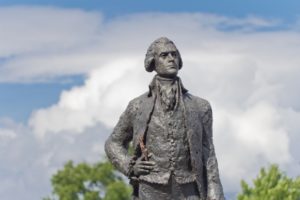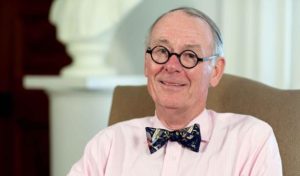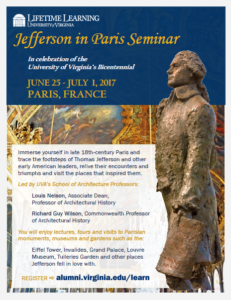Thomas Jefferson’s Paris
Written by Richard Guy Wilson, Commonweath Professor’s Chair in Architectural History, University of Virginia
The years 1784-1789 Thomas Jefferson spent in Paris and in Europe. They proved to be extremely important in the development of his appreciation of architecture, landscape and garden design, painting and sculpture, decorative and other arts. He loved the life of Paris: the salons; the food; the musical events he frequented. He wrote to Marquis de Lafayette in 1787: “I am constantly roving about, to see what I have never seen before and shall never see again.”

The architecture of Paris was undergoing a revolution during the time Jefferson was there, so he experienced the appearance of new and greatly simplified forms. He spent much of his time looking at buildings, some still under construction, such as the Louvre and the Hôtel de Salm on the left bank of the Seine, which he visited almost daily, and gardens such as the Jardin des Plantes and the Jardin du Roi.

Outside of Paris he visited great estates such as Versailles, the Desert de Retz and the Château de Marly; in some cases with Maria Cosway, an artist who introduced him to the Parisian art world. A friendship developed between him and Maria, but ultimately came to an end with his famous letter on the “dialogue [that] took place between [his] Head and [his] Heart.”
Jefferson shipped 89 crates back to the United States filled with furniture, paintings and sculptures he purchased from galleries and auctions. In 1788 he wrote “Hints to Americans Traveling in Europe” in which he suggested the traveler experience many things, especially that the “architecture [is] worth great attention,” and “it is then among the most important arts: and it is desirable to introduce taste into an arts which shews [sic] so much.”
During the Jefferson in Paris Seminar June 25-July 1, 2017, we will visit many of the sites examined by Jefferson. By the end of the week, we will more fully understand the impact of the experience upon Jefferson and how he adopted some of these buildings and forms back in the young United States. I hope you will join us for this exciting learning experience.
In celebration of the University of Virginia’s Bicentennial 2017-19
- Life at the Top: Climate Change in Utqiaġvik, Alaska
- The Only Thing We Have to Fear is Fear Itself
- Stay on Track: Turning Resolutions into Results
- UVA Club of Tidewater: Hoos at Harbor Park
- UVA Club of Atlanta: Cavs Care - Volunteer Income Tax Assistance Events
- UVA Club of Charlottesville: Hoos Reading Hoos Book Club


